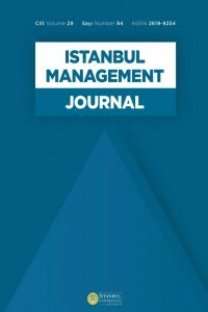How and When to Use Which Fit Indices? A Practical and Critical Review of the Methodology
Fit indices, Confirmatory Factor Analysis, SEM, Chi-Square, Discrepancy Functions Modification Indices, Maximum Likelihood,
___
- Akaike, H. (1987). Factor analysis and AIC. In Selected papers of Hirotugu Akaike (pp. 371-386). Springer, New York, NY.
- Browne, M. W., & Cudeck, R. (1993). Alternative ways of assessing model fit. Testing structural equation models, 154, 136.
- Burnham, K. P., & Anderson, D. R. (2001). Kullback-Leibler information as a basis for strong inference in ecological studies. Wildlife research, 28(2), 111-119.
- Byrne, B. M., Shavelson, R. J., & Muthén, B. (1989). Testing for the equivalence of factor covariance and mean structures: the issue of partial measurement invariance. Psychological bulletin, 105(3), 456.
- Cochran, W. G. (1952). The χ2 test of goodness of fit. The Annals of Mathematical Statistics, 315-345.
- Gulliksen, H., & Tukey, J. W. (1958). Reliability for the law of comparative judgment. Psychometrika, 23(2), 95-110.
- James, L. R., Mulaik, S. A., & Brett, J. (1982). Causalanalysis: Models, assumptions and data. Beverly Hills, CA: Sage
- Jöreskog, K. G. (1969). A general approach to confirmatory maximum likelihood factor analysis. Psychometrika, 34(2), 200. Kenny, D. A. (2015). Measuring model fit. (http://davidakenny.net/cm/fit.htm)
- Mulaik, S.A., James, L.R., Van Alstine, J., Bennet, N., Lind, S., and Stilwell, C.D. (1989), "Evaluation of Goodness-of-Fit Indices for Structural Equation Models," Psychological Bulletin, 105 (3), 430-45.
- Newsom, J. T. (2018). Minimum sample size recommendations (Psy 523/623 structural equation modeling, Spring 2018). Manuscript Retrieved from upa.pdx.edu/IOA/newsom/semrefs.htm.
- Psutka, J. V., & Psutka, J. (2015, September). Sample size for maximum likelihood estimates of Gaussian model. In International Conference on Computer Analysis of Images and Patterns (pp. 462-469). Springer, Cham.
- Schermelleh-Engel, K., Moosbrugger, H., & Müller, H. (2003). Evaluating the fit of structural equation models: Tests of significance and descriptive goodness-of-fit measures. Methods of psychological research online, 8(2), 23-74.
- Schwab, A., & Starbuck, W. H. (2013). Why Baseline Modelling is Better than Null-Hypothesis Testing: Examples from International Business Research. Philosophy of Science and Meta-Knowledge in International Business and Management, 171.
- Steiger, J. H., & Lind, J. (1980). Paper presented at the annual meeting of the Psychometric Society. Statistically-based tests for the number of common factors.
- Steiger, J. H., Shapiro, A., & Browne, M. W. (1985). On the multivariate asymptotic distribution of sequential chi-square statistics. Psychometrika, 50(3), 253-263.
- Templin, J. (2015). Maximum Likelihood Estimation; Robust Maximum Likelihood; Missing Data with Maximum Likelihood [PowerPoint slides]. Retrieved from https://jonathantemplin.com/files/sem/sem15pre906/sem15pre906_lecture03.pdf on 9-10-2019.
- Wheaton, B., Muthen, B., Alwin, D. F., & Summers, G. F. (1977). Assessing reliability and stability in panel models. Sociological methodology, 8, 84-136.
- Yayın Aralığı: 2
- Başlangıç: 1975
- Yayıncı: İstanbul Üniversitesi İşletme Fakültesi İşletme İktisadı Enstitüsü
Vekâlet Kuramına Göre Türkiye’deki Otellerin Pazara Giriş Stratejilerinin Değerlendirilmesi
Ece ZEYBEK YILMAZ, Göksel ATAMAN BERK
Cinsiyete Dayalı Tokenizm: Kadın Egemen ve Erkek Egemen Meslekler Üzerinde Nitel Bir Araştırma
Benan KURT YILMAZ, Olca SÜRGEVİL
Esen ŞAHİN, Melis ATTAR, Aboobakr NIAVAND
Murat YAŞLIOĞLU, Duygu TOPLU YAŞLIOĞLU
Cem Güney ÖZVEREN, Nihal ÜNALDI BAYDIN, Oya ÇELEBİ ÇAKIROĞLU, Güler ÖNDER, Emrah ÖNDER
